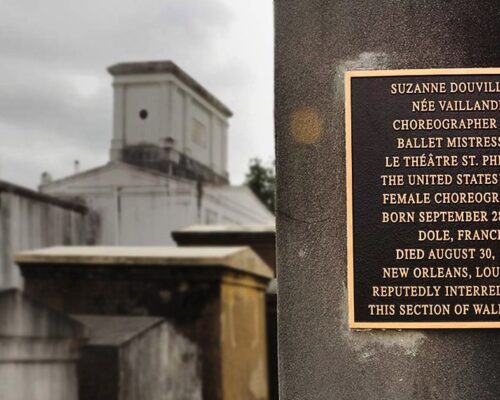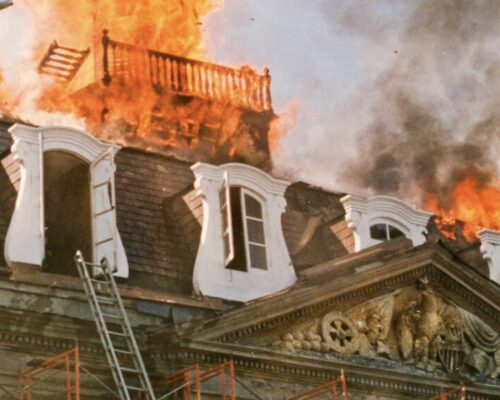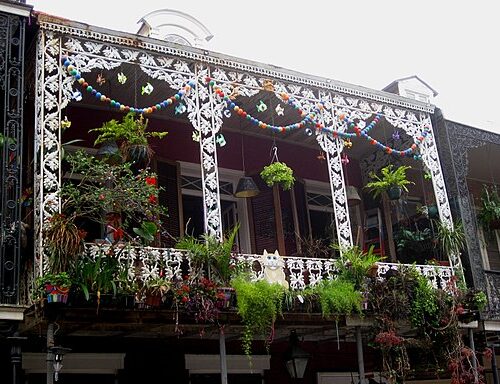Originally published in the French Quarter Journal, July 30, 2019.
In the Roaring 20s, feisty Uptown socialite Martha Westfeldt opens a French Quarter bookstore that becomes Bohemia Central.
From time to time, a shop opens in the French Quarter that becomes a nexus for creative minds. The shop is sometimes a restaurant or a gallery or book store that brings together New Orleanians of diverse talent. But it is always driven by an original and congenial personality.
During Prohibition, one such French Quarter nexus was Martha Westfeldt’s Green Shutter Tea Room and Book Shop. The shop was described in 1928 by poet and author Carl Carmer:
Fairy Tale Deb
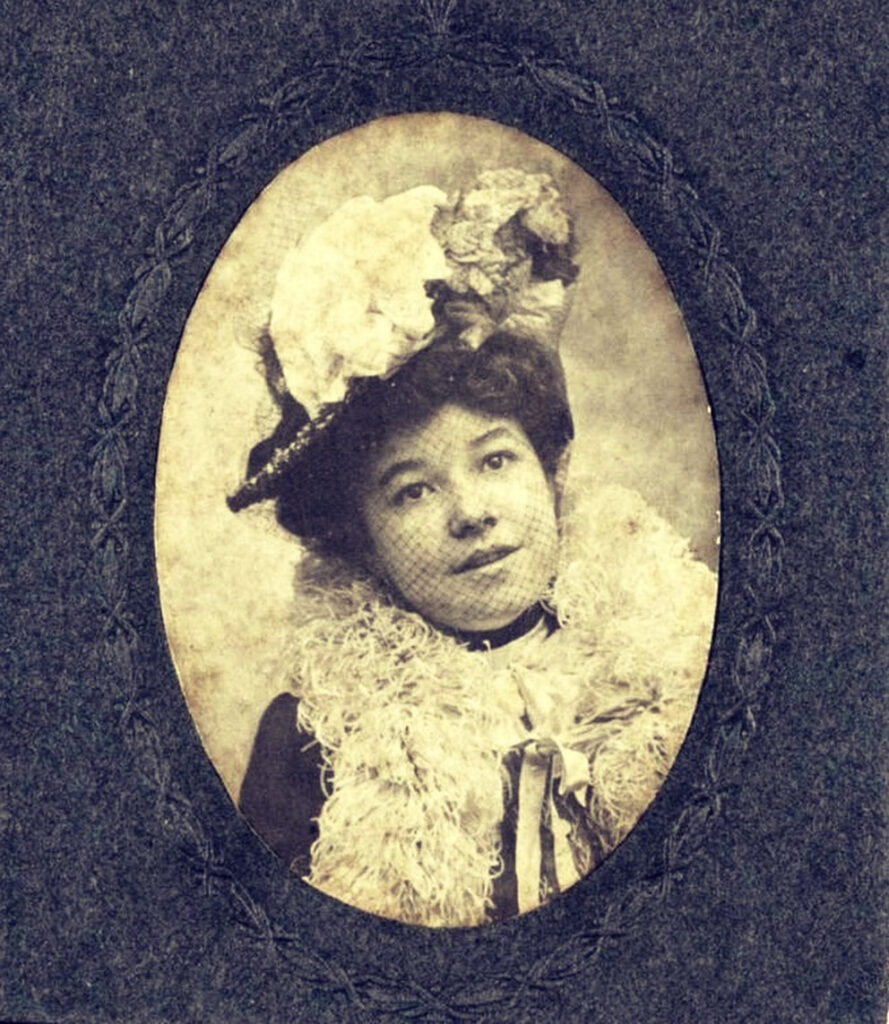
Martha Jefferson Celine Gasquet was born in New Orleans on a Spring day of 1883 to Francis James Gasquet (1835-1907) and Louise Lepeyre (1845-1913). Francis was a wealthy landowner and industrialist from Virginia, a handsome man with blond hair and blue eyes. Louise was a cousin of John Singer Sargent’s Madam X, whose sensuous portrait had scandalized Paris a generation earlier—the Louisiana-born Virginie Amélie Avegno, known in France as Madame Pierre Gautreau.
The youngest of five children, Martha grew up as a classic fairy tale debutante and socialite. She spent summers abroad or in cooler northern states, and had her debut at a New Year’s Eve costume ball in 1900. During Mardi Gras in 1902 she was surprised to be selected from a crowd and crowned queen at the Krewe of Nereus ball.
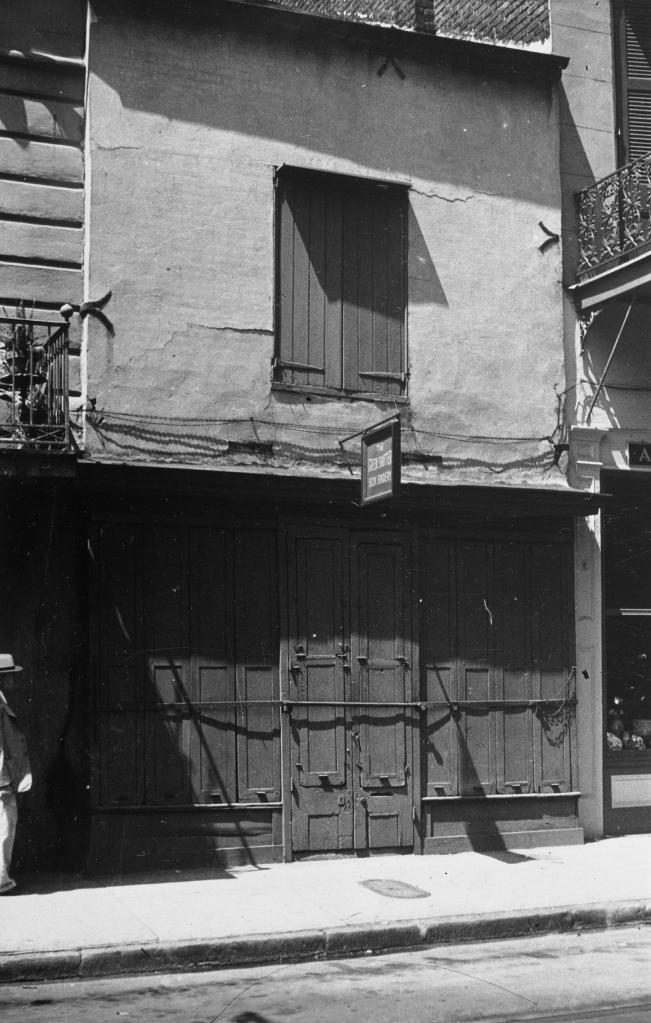
Shortly after the turn of the century, Martha met another wealthy New Orleanian, George Gustav Westfeldt (1880-1961). George was active in politics and the arts and was heir to the Westfeldt Bros. coffee importing business, and was a leader of Crescent City society (on Mardi Gras in 1947, George rode enthroned through the streets as Rex, King of Carnival). Martha and George wed on October 28, 1905.
Martha Westfeldt had many gifts; for example, she was a ceramicist and an artist, mostly a talented cartoonist. But she was also an astute businesswoman. Around 1920, she began to buy properties in the French Quarter, with an eye toward historic preservation, and many of her purchases were near the corner of St. Peter and Royal Streets. She donated temporary space in one such house at 629 Royal Street to the newly-formed Arts and Crafts Club for their official charter on June 1, 1921.
The Green Shutter
But by November of that year, Martha founded—at this same address—a social coffeehouse and tea salon that she named the Green Shutter. Presumably, they served Westfeldt Bros. coffee. Soon the shop moved next door to 633 Royal, where it settled in for many years.
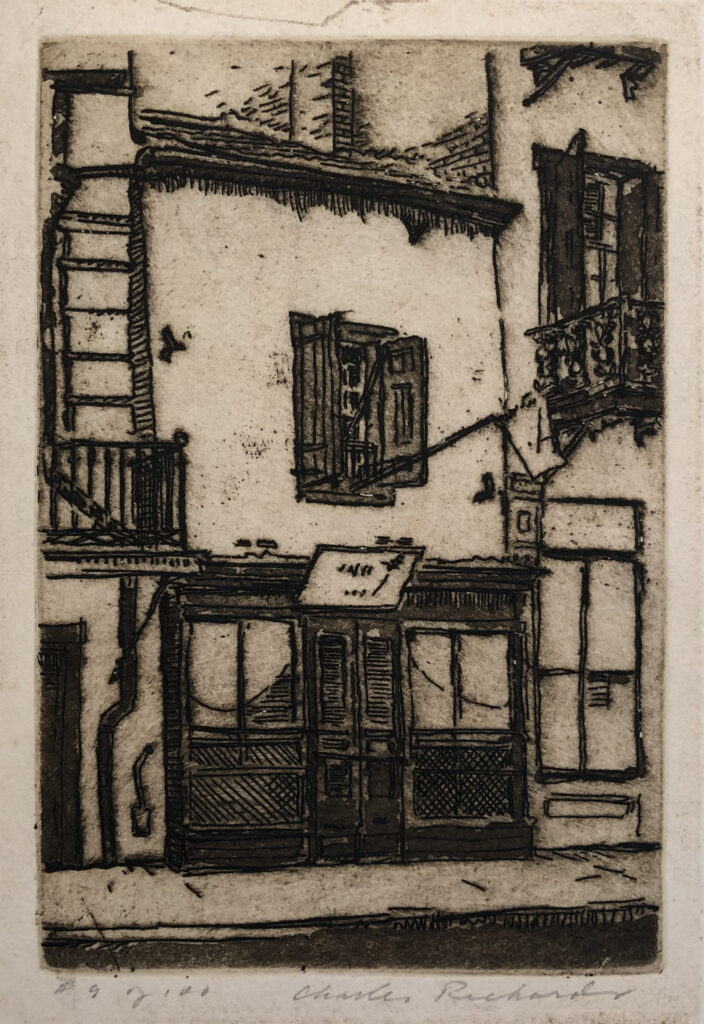
in this etching, circa 1940s. (Private collection)
Initially it was a small restaurant, but Martha also sold artwork and, with the aid of a few employees, began a trade in books and antiques. She also operated a kiln in the back courtyard and sold her ceramics in the shop. From 1922-1924, the Green Shutter was the fashionable place for artists and socialites to entertain.
Martha continued to support New Orleans arts, and many of the best-known local artists showed works in the Green Shutter, including Alberta Kinsey, William Spratling, Morris Henry Hobbs and Clarence Millet.
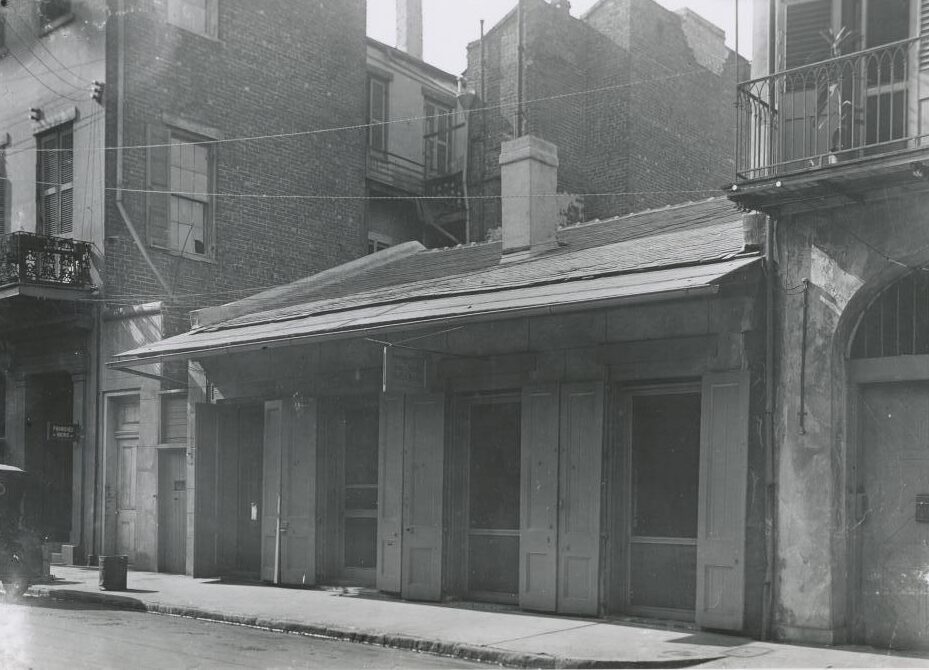
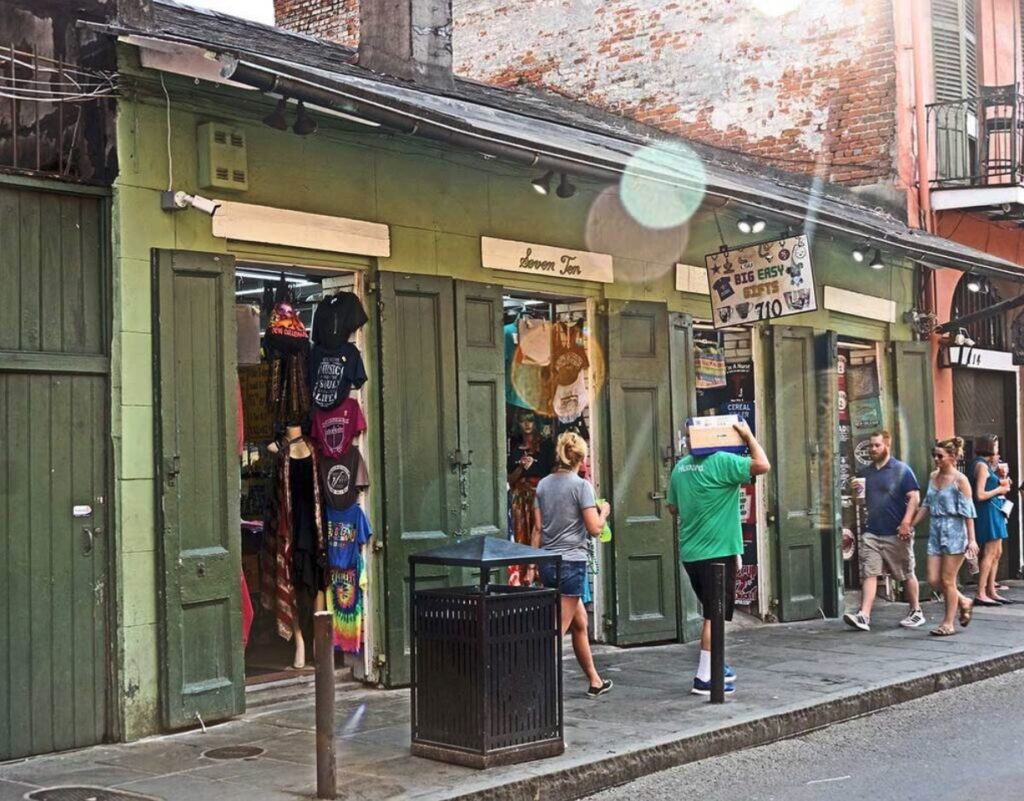
Before long, the shop expanded into 710 St. Peter Street, just around the corner, and patrons could access either building through a passage in the courtyard. Among its patrons, the Green Shutter drew now-famous names, including William Faulkner, Sherwood Anderson, William Spratling, Lyle Saxon and Roark Bradford. Under the Green Shutter label, Martha even published at least one book, Mollie E. Moore Davis’ Selected Poems (1927).
New Orleans writer and bon vivant Lyle Saxon observed the activities at the Green Shutter approvingly:
Around the corner from Royal, in St. Peter street, there is tremendous activity—the Green Shutter is open and is in full swing, with artists in smocks discussing this business of life as they sip their coffee in the courtyard, and with a sprinkling of ‘uptown’ people who have come to see just what these artists are up to. It is here that the world of fashion touches, ever so lightly, the world of art—Kismet! [2]
Luncheon Politics
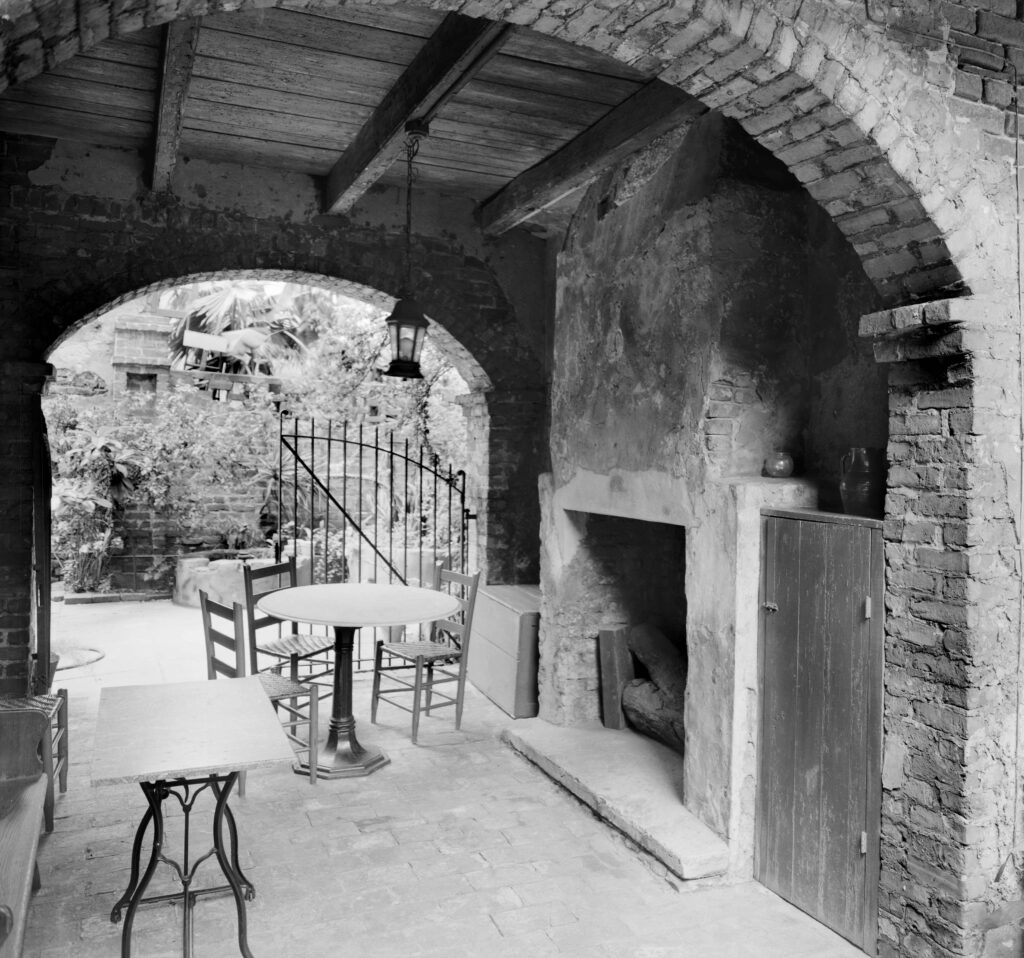
By the early 1930s, gatherings at the Green Shutter took a more serious tenor, and luncheon topics covered politics and women’s issues. Martha became one of the founders of the Women’s Committee of Louisiana, the main thrust of which was to recall the mercurial Louisiana senator, Huey P. Long.
Long was always the source of controversy, and was not infrequently accused of wrongdoing. While governor, he survived an impeachment attempt, and there were allegations of corruption and fraud in Long’s 1932 senate campaign.
The Women’s Committee formed shortly after the 1932 election and was headed by a friend and colleague of Martha’s, Hilda Phelps Hammond. The two women found Long’s brash personality and tactics offensive. Martha also supported Roosevelt’s New Deal, which Long often criticized.

In support of the Women’s Committee, Martha donated office space on the second floor of 633 Royal. And to benefit the committee, she organized well-advertised antiques sales at 710 St. Peter. The Times-Picayune newspaper, never a friend of Long, provided ample free publicity.
The committee grew to a membership of over 1500 women, but met with resistance from many corners of Washington. Although backed by national newspapers and growing popular support, their petitions to investigate and recall Long made slow progress. However, the committee’s work became moot upon Long’s assassination on September 5, 1935, at the steps of the capitol building in Baton Rouge. A year or so later, the group dissolved.
France Forever
Martha remained active in important issues, however. During World War II, she ran a branch of a national organization called France Forever from the rooms of the Green Shutter, raising funds for French soldiers and donating food and goods to French and Belgian families caught up in the war.
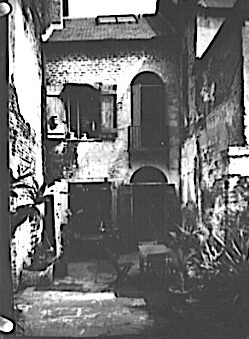
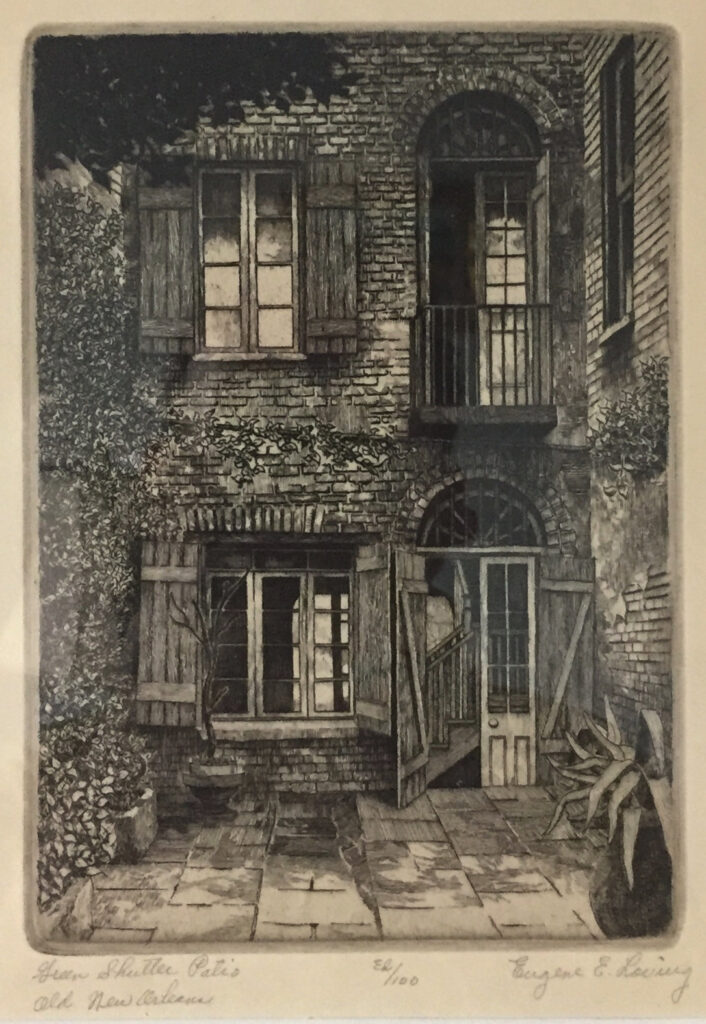
Newspapers recounted that, while she held a meeting of France Forever at her home one day, eight Vichy French sailors showed up and asked Martha for help. The Vichy regime was a puppet government set up after Germany overran France. The sailors had jumped ship and somehow made their way to New Orleans.
Martha secreted them in her Garden District backyard, and later hid them at the Westfeldt summer home in Waveland, Mississippi, until they could be sent to New York and then onward to support the Allied de Gaulle forces.
After the armistice, France recognized her work and made her a Chevalier of the Legion of Honor. Belgium honored her with the Silver Medal of the Order of the Crown.
Recipes and Philanthropy
In the years after the war, Martha returned to life as a socialite and philanthropist. With the exception of an occasional letter to the editor, she largely retired from politics. The Green Shutter was turned over to the American Cancer Society as a headquarters.
But Martha did not disappear. She found a cause in support of the New Orleans Public Library, and she often published her favorite recipes in the Times-Picayune. Here is Martha’s courtbouillon recipe.[3]
Prepare a good roux from a tablespoon of lard, a tablespoon of flour and a cup of water to which is added a finely minced clove of garlic and a can of tomato paste, using water to rinse out can, and two bay leaves and a tablespoon of sugar. Add pepper and salt to taste and simmer for a few minutes. Now add your raw fish and cook until done. Serve on slices of toast.

Martha Westfeldt died from a heart attack on April 15, 1960 and was survived by her husband George, four children and multiple grandchildren. She is most remembered for her contributions to the arts and society through her work at the Green Shutter, but her legacy in politics and social work extends much further.
Today the Royal Street location of the Green Shutter is occupied by Naghi’s, an antiques store and art gallery. Owner Effie Naghi has been in that location since 1986. He still has the original Green Shutter sign, stored upstairs in the building’s attic.
Special thanks to The Historic New Orleans Collection for use of several images in this story.
[1] Carl Carmer, “Song for the Green Shutter,” French Town (New Orleans: The Quarter’s Bookshop, 1928) unnumbered page.
[2] Lyle Saxon, “What’s Doing,” Times-Picayune Sunday Magazine, October 25, 1925, p. 2.
[3] “Favorite Dishes of Prominent Women,” Times-Picayune, November 10, 1950, p. 44.

